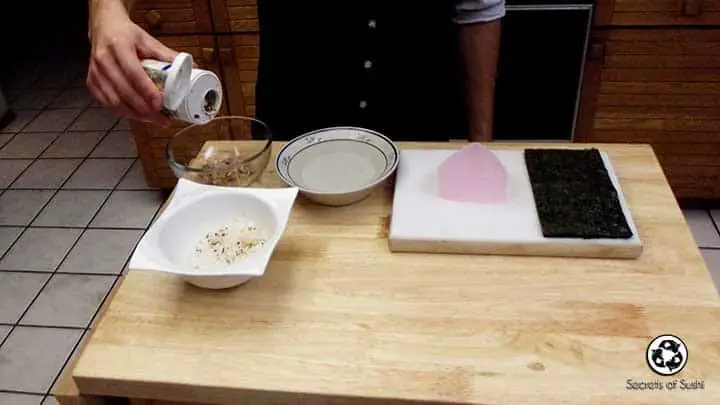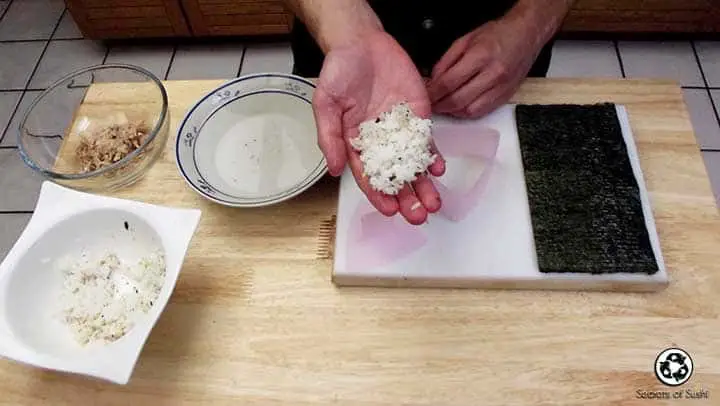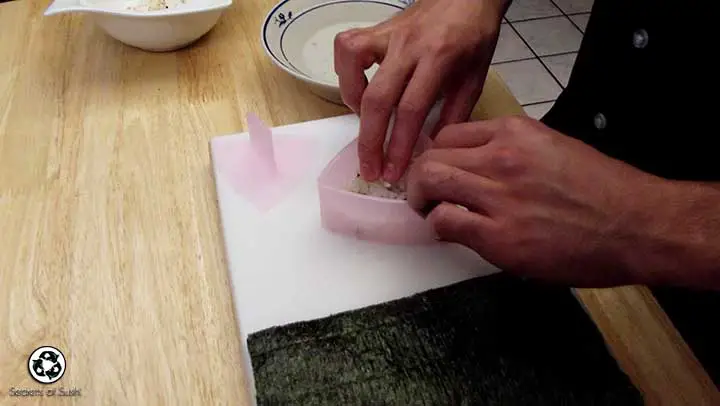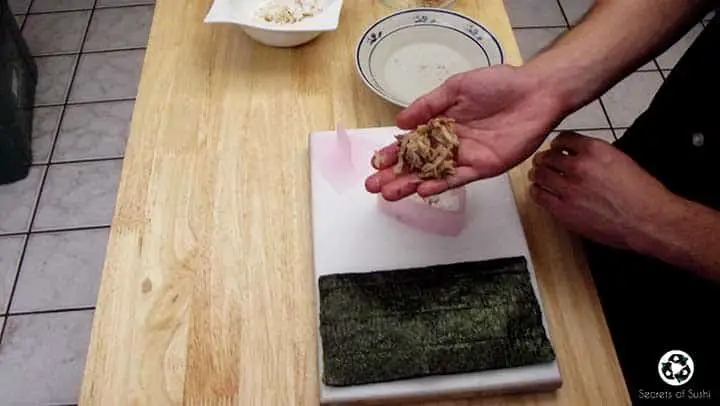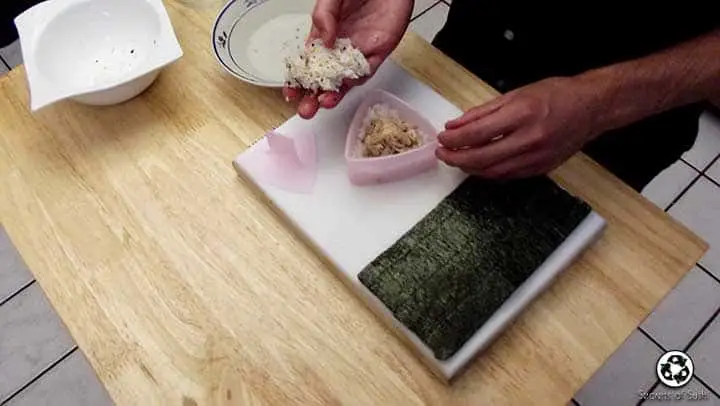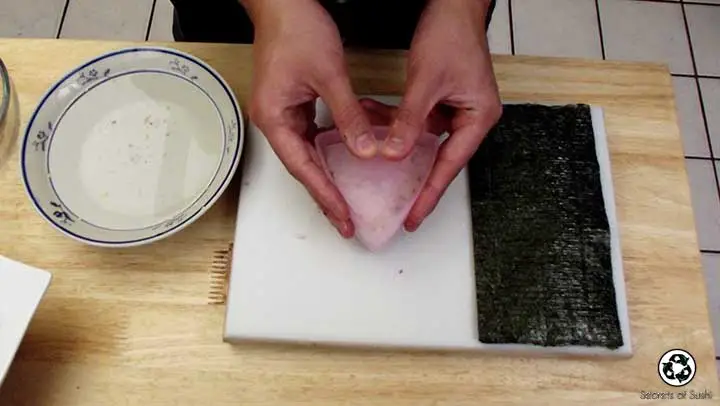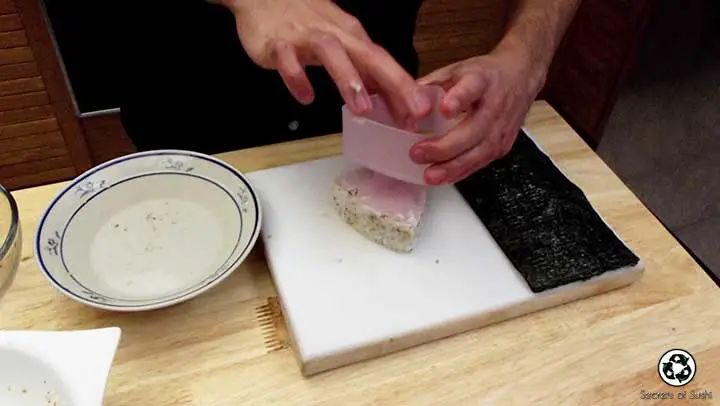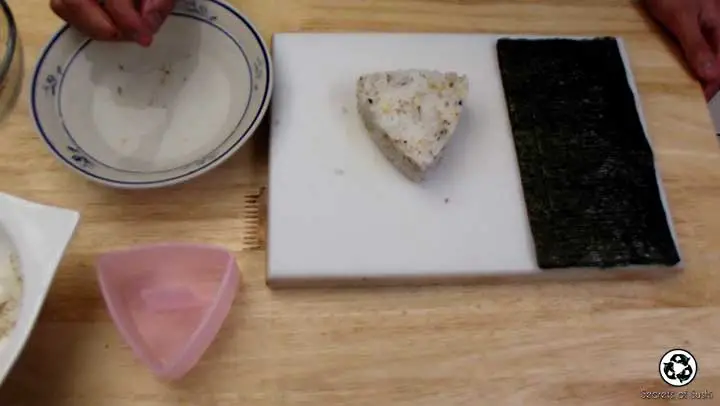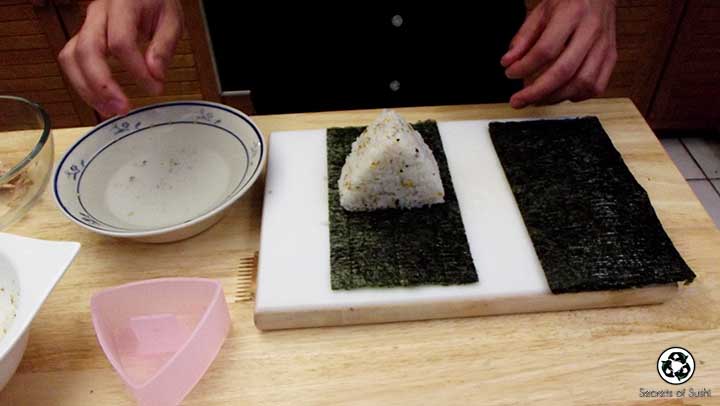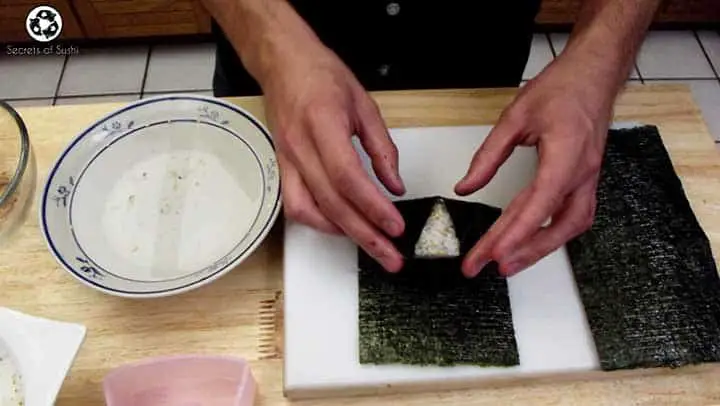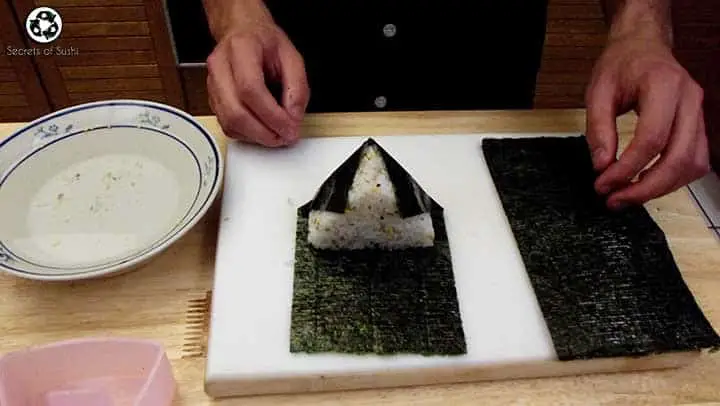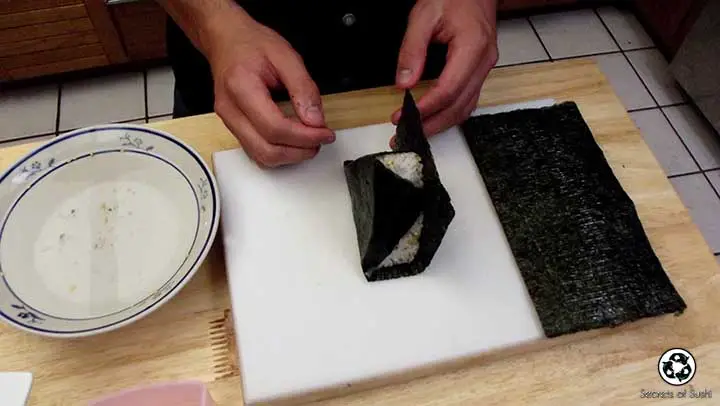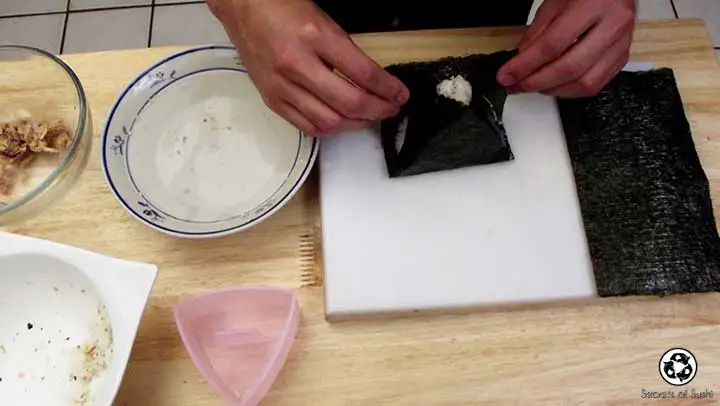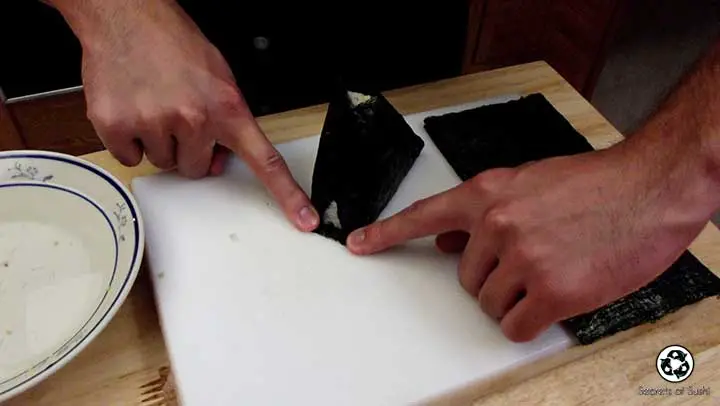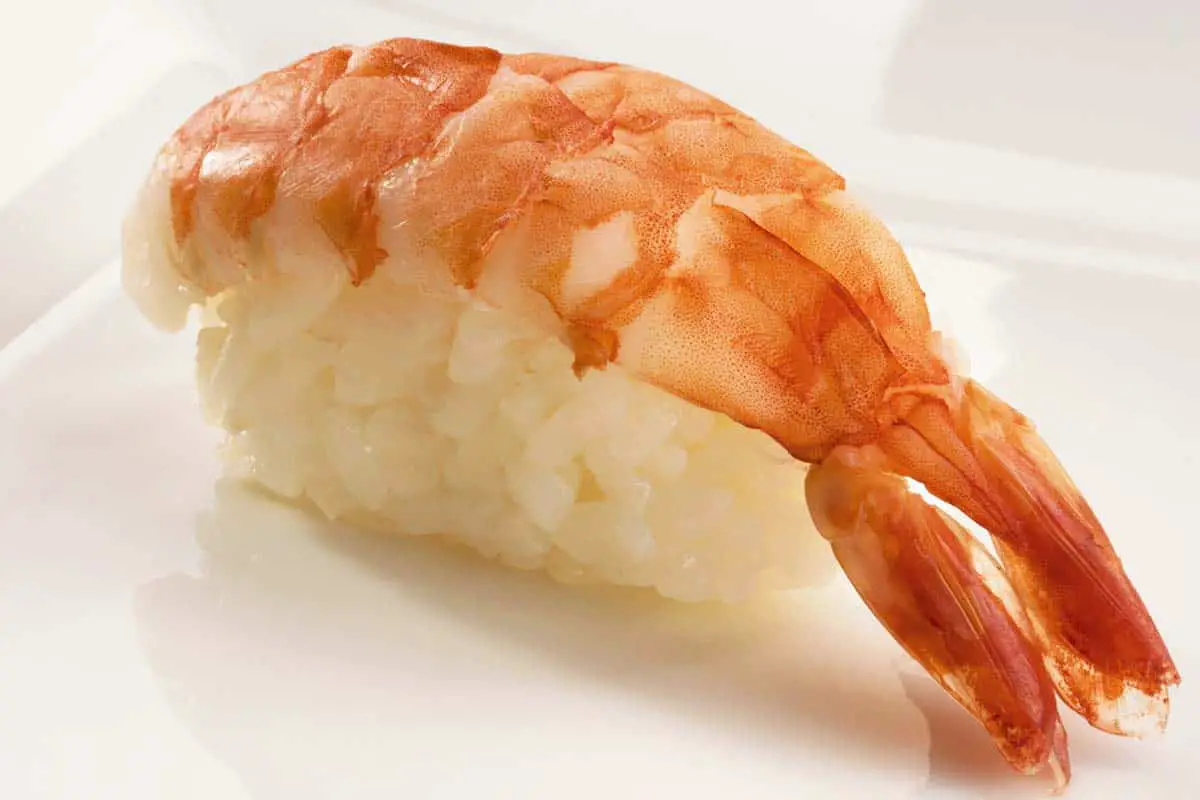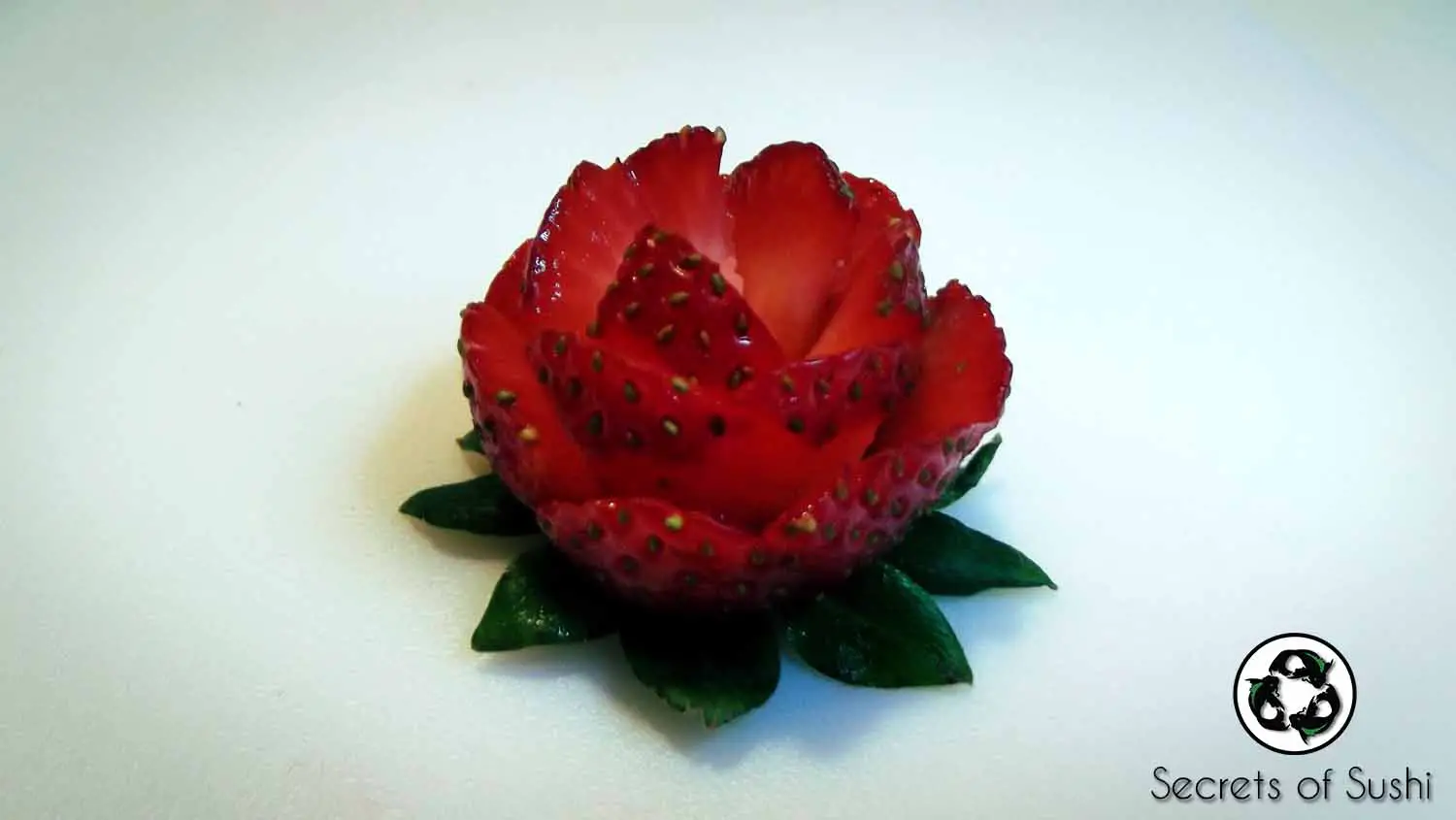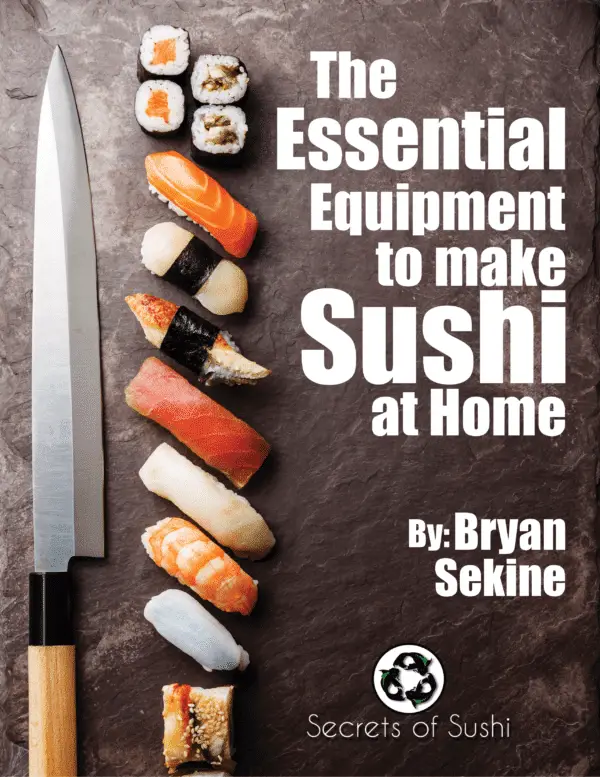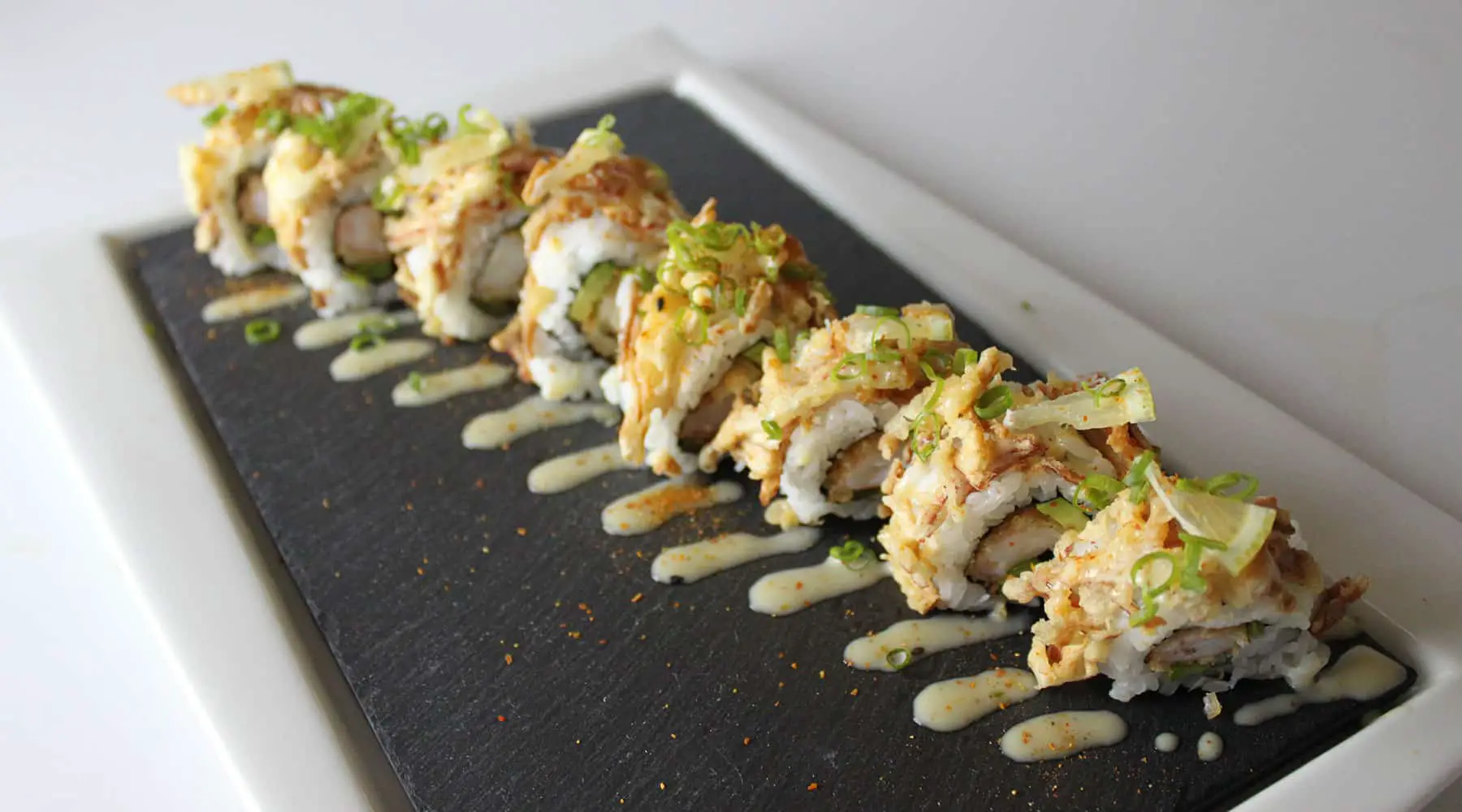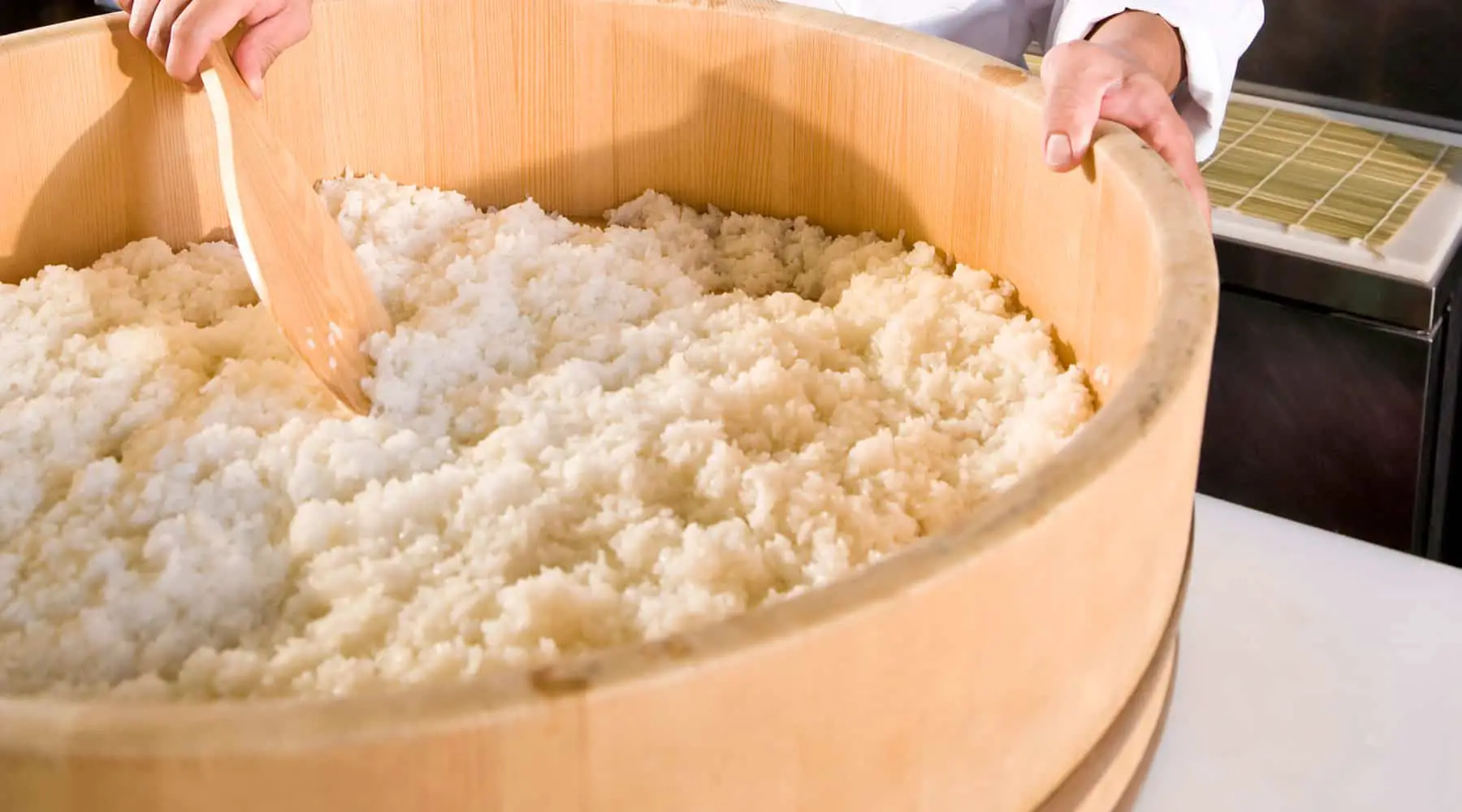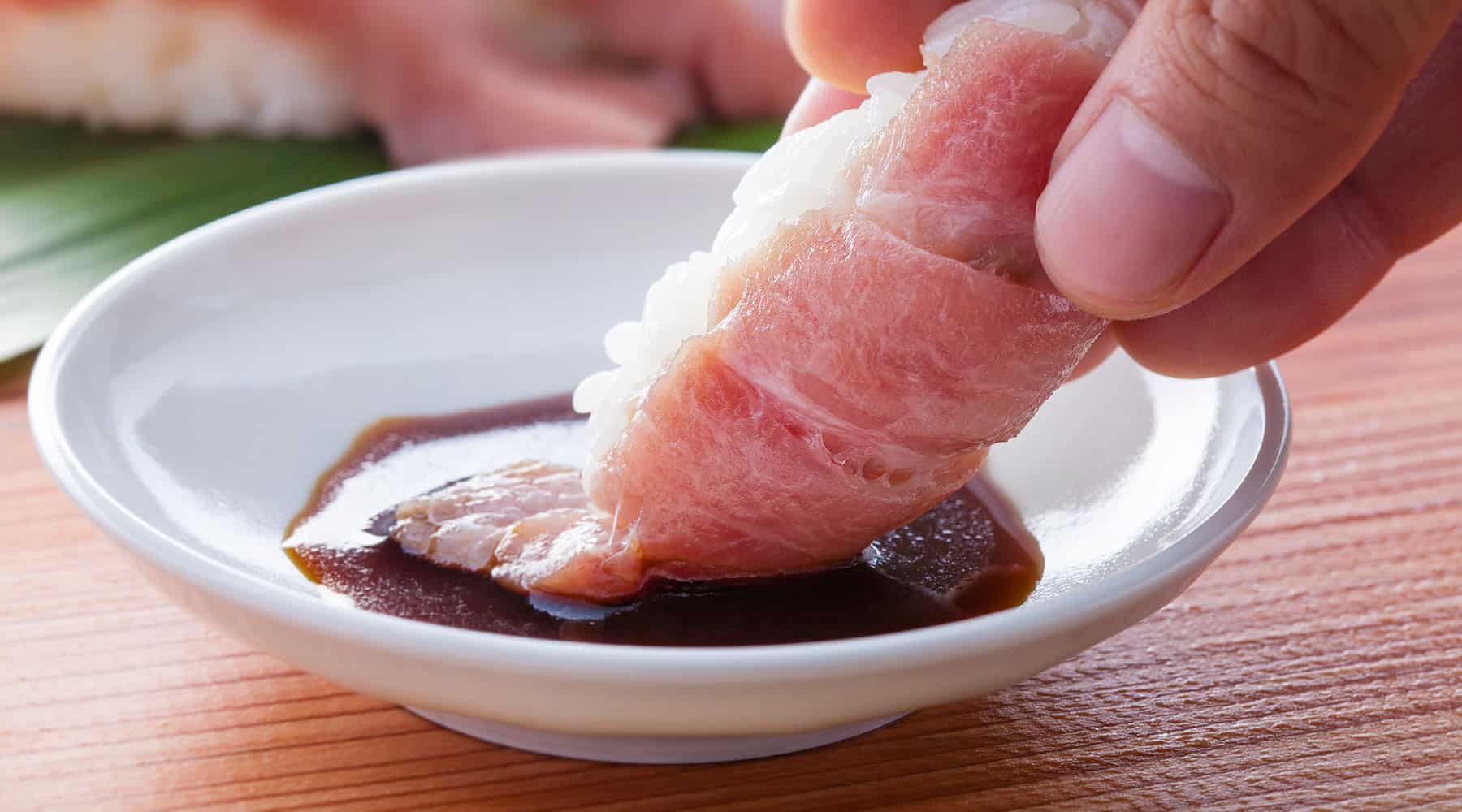At first glance, Onigiri (also known as O-musubi, or rice ball) looks like a type of sushi. But there are a few, key differences, that separate it from the rest! Most notably, the rice ball is made from salted rice, not vinegar rice.
In Japan, this is considered a type of quick, comfort food. It’s easily made, easily found, and inexpensive. To help put it into perspective, culturally, think of it like a western sandwich – thousands of combinations, shapes, and ingredients.
The rice ball can be made plain, filled with ingredients, mixed with ingredients, and even grilled. They are extremely diverse in flavor and even shape! The most common shapes for onigiri are triangles, squares, disks or pucks, and cylinders. Some companies have even made molds to the shape of Hello Kitty.
For this tutorial, you will need:
- Bowl of water
- Steamed rice, lightly salted to taste
- Nori
- Filling (steamed vegetables, cooked meats, raw fish, cooked fish, etc.)
- **optional** Onigiri Molds or Press
- **optional** Furikake or other spices
- Small cutting board or clean cooking surface
In the example below, I use slow cooked chicken and Furikake (dry spice mixture for rice). However, feel free to use any kind of filling you would like.
Step 1: Spice Your Rice
Though not necessary, I find that adding a little furikake to your rice can add a lot of flavor! Make sure to add about 1 tablespoon (~14 grams) to 1 cup (8 oz.) of cooked rice first. Spices and exact measurement can vary according to taste. Try out a few types of spices and measurement and sample a small portion of your rice mixture before continuing.
Step 2: Add a layer of Rice
Dip your hands in water so that they are slightly damp. This will make sure the rice doesn’t stick to your hands too much. Next, grab a small portion of rice (just smaller than your palm) and place it into your mold.
Press the rice around your mold, making sure that the entire bottom is cover as much as possible. Uniformity is key here!
Step 3: Add Your Filling
Now it’s time to add your filling. You can add any type of filling you would like. For this example, I’m using slow roasted chicken! The amount you will put in will depend entirely on how big you would like your onigiri to be. The main idea here is to be able to surround your filling, entirely, with rice.
If you put too much of your filling in, then the ingredients will fall out and become very messy while eating. For this example (and the size of this mold) I use roughly a golf ball-sized portion of chicken.
Step 4: Cover Your Filling
Now we need to cover our filling with rice. Be sure to get some rice on all four sides. If you’re using a mold, make sure that you don’t overfill the mold by putting rice above the rim.
Step 5: Press the Rice
While different mold vary in size and shape, the steps to using them are very similar. This step will be the one that varies the most. The mold I am using doesn’t have a bottom and the pressing motion comes from a removable panel at the top.
Firmly press the top panel to compress the rice and ingredients together. Make sure not to press so hard that you smash the rice!
Step 6: Remove the Mold
In many cases, there will be a bottom to the mold with a section to push the rice ball out. In this instance, since there isn’t a bottom, I am able to slowly slide the mold off of the rice ball, from bottom to top, making sure that the top panel is held in place.
Step 7: Wrap with Nori
Now we’re ready to wrap our onigiri with nori. This step may seem difficult at first, but with a little practice it becomes very simple.
Place your rice ball in the center of the nori, as shown above, with the textured side of the seaweed facing up.
Now fold the seaweed so that it touches the back side of the rice. The more rice that is touching the nori, the better it will hold.
Fold the corners around the top of your rice ball. Press as much of the nori to the rice as possible – this will make your final product much cleaner looking.
Now, turn your rice ball around and repeat for the other side!
Step 8: “Sealing” Your Rice Ball
“Now that we have most of the rice covered, how will the nori stick to the rice ball?”
Great question! For this next step we will need to get the corners of the nori slightly wet.
Using both hands, dip your fingers into the water and transfer a small amount over to each corner of your nori. We want the seaweed to lose it’s crisp consistency. Be careful though, wet nori is very delicate and easily torn.
Once the nori is wet, fold it over so that it touches the smooth side of the seaweed. Sometimes light pressure or a rubbing motion will help it adhere. The wetter your nori is, the longer it will take to dry and adhere to itself.
Step 9: Finishing Touches
Now that we have most of the sides covered, you can stop here. However, I’m a practitioner of culinary aesthetics, so I want to make my dish as pretty as possible.
For the bottom corners, there should be a little bit of nori hanging off. You can fold the corners in, get them damp, and then fold them up. Much like the previous steps!
The end result should be delicious onigiri with three, slightly exposed corners of rice. Now you can pack it for a lunch, dip it in a complimentary sauce, or enjoy it just like this.
A Brief History and Fun Facts
- Japanese people have been enjoying onigiri for hundreds of years – as far back as the 10th century!
- Samurai used to carry a small, bamboo, container of onigiri with them to enjoy as a quick meal during war times.
- Traditionally, Ume (pickled plum) was put inside of the rice balls. Most of the traditional filling was pickled or salted so the dish could be taken on long trips.
- Today, rice balls are still enjoyed as a picnic dish, a packed lunch for work or school, or a midday snack. Some restaurants specialize in making rice balls and have hundreds of varieties to try!
- Rice balls, in various forms, can be found in convenient stores in China, Taiwan and South Korea, as well as Japan and the United States.
- Modern packaging of rice balls includes a special type of plastic wrapper that goes in between the nori and the rice – as a moisture barrier. When the wrapper is removed, the rice and the nori make contact for the first time. This helps the nori stay crisp until eaten.
- Onigiri was traditionally made entirely by hand and thought to be too difficult to mass produce. Today, several styles of molds and even machinery make these rice balls much more accessible.
[one_third][iframe src=”http://rcm-na.amazon-adsystem.com/e/cm?t=secrofsush-20&o=1&p=8&l=as1&asins=B0033SMEDC&ref=tf_til&fc1=000000&IS2=1<1=_blank&m=amazon&lc1=0000FF&bc1=E3E3E3&bg1=E3E3E3&f=ifr” style=”width:120px;height:240px;” scrolling=”no” marginwidth=”0″ marginheight=”0″ frameborder=”0″]
[/iframe][/one_third]
[one_third][iframe src=”http://rcm-na.amazon-adsystem.com/e/cm?t=secrofsush-20&o=1&p=8&l=as1&asins=B001U7CWJE&ref=tf_til&fc1=000000&IS2=1<1=_blank&m=amazon&lc1=0000FF&bc1=E3E3E3&bg1=E3E3E3&f=ifr” style=”width:120px;height:240px;” scrolling=”no” marginwidth=”0″ marginheight=”0″ frameborder=”0″]
[/iframe][/one_third]
[one_third_last][iframe src=”http://rcm-na.amazon-adsystem.com/e/cm?lt1=_blank&bc1=E3E3E3&IS2=1&bg1=E3E3E3&fc1=000000&lc1=0000FF&t=secrofsush-20&o=1&p=8&l=as1&m=amazon&f=ifr&ref=tf_til&asins=B004O3LKEO” scrolling=”no” marginwidth=”0″ marginheight=”0″ frameborder=”0″]
[/iframe][/one_third_last]

